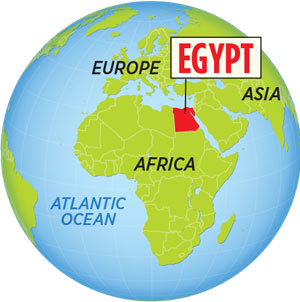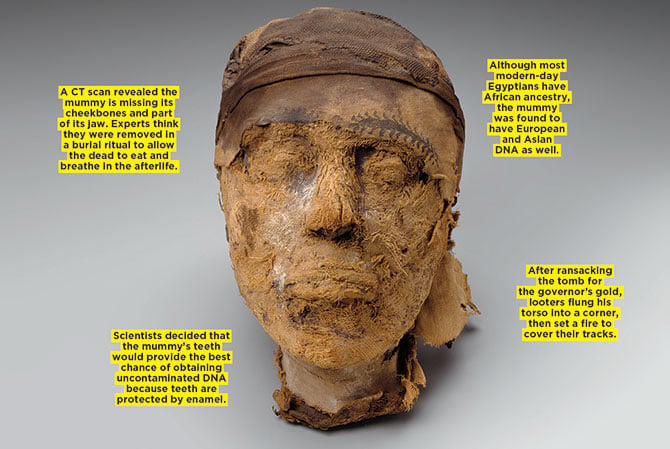
Jim McMahon/Mapman®
Whose severed head was on display in the ancient Egypt exhibit? That was the question facing curators at the Museum of Fine Arts in Boston, Massachusetts, back in 2009.
The 4,000-year-old mummy head had been found in 1915 in a looted tomb in the huge Egyptian cemetery of Deir el-Bersha. The tomb was the final resting place for a governor named Djehutynakht (juh-HOO-tuh-nokt) and his wife. (Experts believe that the couple lived around 2000 B.C.) But it was unclear whether the severed head was Djehutynakht’s, or that of his bride.
To learn the mummy’s identity, scientists removed one of its teeth and tried to test its DNA, something that had never been done on a mummy. Their attempts were not successful.
Finally, in 2016, the Federal Bureau of Investigation (FBI) offered to help. A team of forensic scientists trained to extract DNA from extremely old bodies drilled into the tooth to make a powder. The scientists were able to obtain DNA from the powder and soon had their verdict. The mummified head belonged to the governor himself.
Not only did unraveling the mystery help identify the mummy, but the case also shows that it’s possible to successfully obtain DNA from very old and damaged remains. That’s something that could help the FBI solve crimes going forward.


